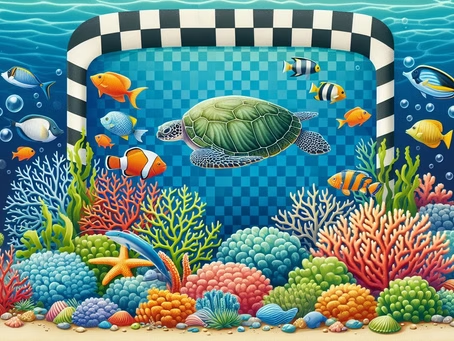Introduction
Marine Protected Areas (MPAs) are critical tools in preserving ocean health and biodiversity. As environmental challenges grow, MPAs serve as a beacon of hope for marine ecosystems. They not only protect habitats and species but also support communities that depend on the sea. This article explores the roles, successes, challenges, and future of MPAs, highlighting both science and human stories behind them.
Diving into Marine Protected Areas
What Are MPAs?
MPAs are ocean safety zones where human activities are regulated to safeguard ecosystems. They vary in purpose and protection level:
- No-take zones – all extraction like fishing or mining is prohibited.
- Habitat/species management zones – tailored protection for specific habitats or species.
- Multiple-use zones – allow sustainable activities while preserving biodiversity.
These variations make MPAs versatile, ensuring conservation while balancing human needs.
Global Spread of MPAs
From the Coral Triangle to the Arctic, MPAs are expanding worldwide. Iconic examples like Australia’s Great Barrier Reef show large-scale protection in action, while Mediterranean MPAs preserve migratory routes. Together, they form a global network crucial for long-term resilience.
Why MPAs Matter
Protecting Biodiversity
- Provide safe havens for species to rebound.
- Shield habitats from destructive practices.
- Create corridors for migratory species.
Safeguarding Endangered Species
Species like sea turtles and vaquita porpoises find lifelines in MPAs. Protection reduces poaching, illegal fishing, and habitat destruction, helping vulnerable populations recover.
Buffering Climate Change
By preserving mangroves, seagrasses, and coral reefs, MPAs strengthen the ocean’s role as a carbon sink. They also enhance ecosystem resilience against warming waters and acidification.
Success Stories
Coral Reef Recovery
MPAs foster reef regeneration through reduced fishing, restoration projects, and spillover effects that enhance fish populations and eco-tourism.
Fisheries Rebound
Fish populations grow within MPAs and spill over into nearby areas, boosting catches and stabilizing local incomes. This creates a win-win for both oceans and communities.
Marine Megafauna Resurgence
Whales, sharks, manta rays, and dugongs show population increases in protected zones, benefiting ecosystems, research, and tourism.
Challenges Facing MPAs
Enforcement
- Limited resources for patrols and monitoring
- Jurisdictional complexities on the high seas
- Illegal fishing undermining protection
Funding Gaps
Effective MPAs require sustained investment in research, patrols, and community engagement. Without proper resources, their potential remains unrealized.
Local Conflicts
Restrictions can clash with traditional fishing practices. Collaborative approaches, alternative livelihoods, and inclusive decision-making reduce tensions and improve compliance.
Measuring Success
Marine Health Monitoring
Scientists track biodiversity, water quality, and species populations to gauge effectiveness. Local knowledge complements modern tools for adaptive management.
Economic Impact
MPAs generate income through eco-tourism and sustainable fisheries, benefiting local communities when carefully managed to avoid over-tourism.
Long-Term Research
Decades-long studies reveal trends like coral recovery and species adaptation, providing crucial data for effective strategies.
Community Involvement
Education and Engagement
- Workshops and school programs build awareness.
- Citizen science involves locals in conservation.
- Shared knowledge fosters pride and stewardship.
Co-management
Governments, NGOs, and communities share responsibility, combining scientific expertise with traditional knowledge for sustainable management.
Stewardship
When locals lead, MPAs thrive. Empowering youth, women, and fishers ensures stronger connections and long-term success.
Policy and Innovation
International Agreements
UNCLOS, CBD, and regional treaties set frameworks for collaboration and enforcement, turning paper policies into action.
National Policies
Governments establish legal frameworks, provide funding, and integrate MPAs into broader ocean management strategies.
NGO Contributions
NGOs offer research, advocacy, and local support, bridging gaps where state resources fall short.
Future of MPAs
Global Targets
Efforts aim to protect at least 30% of oceans by 2030 through effective, connected networks of MPAs.
Marine Spatial Planning
Integrating MPAs into broader maritime activities ensures balance between development, conservation, and livelihoods.
Climate Change Adaptation
Future MPAs must account for warming seas, shifting species ranges, and resilient refuges.
Conclusion
MPAs are not just lines on a map—they are lifelines for biodiversity, fisheries, and people. By supporting them through policy, innovation, and community action, we safeguard the ocean and our future.
Frequently Asked Questions
What is an MPA?
A designated area where human activity is regulated to conserve biodiversity and habitats.
Why are MPAs important?
They protect species, rebuild fisheries, and act as natural defenses against climate change.
How do MPAs differ?
Some allow limited use while others ban all extraction, depending on conservation goals.
Can you share a success story?
Apo Island in the Philippines shows coral reef recovery and improved fisheries after MPA establishment.
What challenges do MPAs face?
Key issues include enforcement, funding, and balancing local community needs.
How is success measured?
Through biodiversity monitoring, ecosystem health, and community economic benefits.
How does community involvement help?
Engagement builds stewardship, improves compliance, and blends traditional with scientific knowledge.
What role do global policies play?
They set international conservation targets and frameworks for cooperation across borders.

